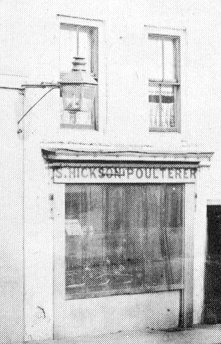
| Many gas street
lights were wall mounted like the old oil lamps. |
|
The earliest lights in which the gas was lit directly from an
open-ended tube were very inefficient. To increase the amount of light
produced, iron caps with several holes were introduced. These burners
quickly corroded and the light output fell accordingly. They were known
by the shape of the flame that was produced and given such names as
batswing, cockscomb, cockspur, and rat-tail.
The first gas works in the U.K. were built for the Gas Light and Coke
Company, that was established in 1812 to light the City of Westminster.
The company was formed by Frederick Winsor from Germany, who had
previously worked in France for Philippe Lebon.
The company’s chief engineer was Samuel Clegg, an ex Boulton and
Watt man. In 1817 he installed a gas works at the Royal Mint and
developed an efficient gas meter. By 1819, 288 miles of pipes had been
laid in London to supply 51,000 burners.
Within ten years most of the country’s larger towns and cities were
lit by gas.
|